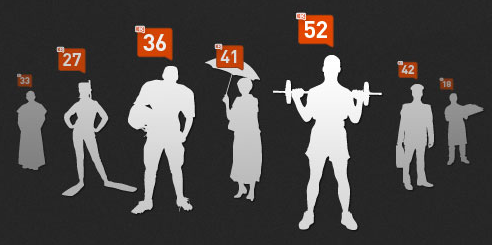Throughout advertising’s history, drawing a line from a traditional asset to a sale has been notoriously difficult, but the Internet changed that. Early on, it offered a distinct advantage over its older, offline predecessors: measurability. But despite the enormous progress made, measurement is still one of the major challenges facing both the industry and business owners. Unfortunately, the majority of data made readily available by analytics packages are vanity metrics that scrutinize at a superficial level. They’re useful in the right context and will tell you if your site is engaging or not and how visitors interact with it. But vanity metrics don’t necessarily correlate to more important numbers like cost of new customers acquisition, lifetime value, revenues and profits nor do they affect overall marketing or business goals. Vanity metrics are only focused on because they look great in press releases. The analytics that entrepreneurs should be more concerned with are actionable metrics that help them make decisions.
Think about your most recent website traffic report. What have you done with that? Do you know what drove those visitors to your page? Do you know what actions to take next or how to leverage that traffic? A business that only cares about its daily hit count is the same as a store that only cares about the number of people who come through its doors but not necessarily that they purchase anything. Generally speaking, marketers and advertisers tend to believe that whatever they were working on that immediately precedes a spike in traffic (i.e., new products, promotions or policy) probably caused it. We infer causation from correlation. We aren’t, however, quick to jump on the sword when the numbers go back down. The reality is that a response to a marketing program may often be the result of the cumulative effects of an entire campaign rather than a response to a single advertisement or promotion.
Moving forward, goals should be reoriented not just to validate that you’ve built something people want but also to confirm that your efforts to grow your business are fruitful and paying dividends. This is where you establish and define your product’s unique value proposition. So what should you be focus on instead? Listed below are ways to finding metrics you can act on that will impact your bottom line.
Not everyone who comes to your website will make a purchase or complete your designated call-to-action. That’s a given. Conversion funnels reveal when or where visitors drop-off and are used to mitigate this on a page-by-page basis. An analysis of visitor flow path diagnoses the problems that derail conversion, leading to improved usability and/or the implementation of more effective calls-to-action at each step of the way. Remember that users will almost always opt for the path of least resistance so make it easier by simplifying the process for them. The only problem is that they don’t track long lifecycle events, and almost all of them use a reporting period where events generated in that period are aggregated across all users skewing numbers at the fringes of the funnel.
That’s where cohort analysis comes in. This involves segmenting your users into smaller groups, using shared common characteristics or experiences within a defined period, to compare against one another. As an example, let’s say that you’re wanting to increase sales on an application on the Android Market. To do so, you group together users who download the free demo on week one, those on week two, those on week three and so forth. From there, you might find that of the first group, X% went on to purchase the application. Of the second group, Y% made purchases. Of the third group, Z% went on to make theirs. At that point, you’re able to evaluate any changes made which correlate back to your results and fine tune from there. This prevents influxes in traffic due to blog updates, PR/advertising, your competitors or extraneous variables from skewing your numbers.
In A/B split-tests, you have two versions of an element and a metric that defines success. To determine which is better, say it’s a new homepage layout, you randomly split your website traffic between two groups and measure their performance based on visitor flow, bounce rate and/or whether or nor your designated call-to-action is satisfied. At the end of testing, you can select the version that performs best for real-life use. Split testing is effective because it definitively confirms or denies if changes in layout, copy, design, etc. are beneficial not.
Figuring out which metrics to use, and which ones to discard, is difficult because every business is different, and the process is one that iterates itself over and over again. The best solution for you is the one that works best for your customers and/or users so don’t assume too much upfront. Measure what matters. It’s easy to think that more reports is better, but it’s not. The key is to have as few as possible. When in doubt, remember that users seek out sites in a goal-oriented fashion (e.g., to learn more about a company, to sign up for a newsletter and/or to shop). Provide a great first experience, and they might just come back and make a purchase.
If you have questions or comments, please feel free to leave them in the fields below. To learn more about how Bravo Design, Inc. can contribute to your growing business, click here or fill out a contact form by here.
Photo credit: Doug Savage of www.savagechickens.com
 Two centuries later, Barnabas is accidentally freed from his tomb and emerges into the very changed world of 1972. He returns to Collinwood Manor to find his once-magnificent mansion in ruin and occupied by Barnabas’ dysfunctional descendants, all of whom are hiding dark and horrifying secrets.
Two centuries later, Barnabas is accidentally freed from his tomb and emerges into the very changed world of 1972. He returns to Collinwood Manor to find his once-magnificent mansion in ruin and occupied by Barnabas’ dysfunctional descendants, all of whom are hiding dark and horrifying secrets.